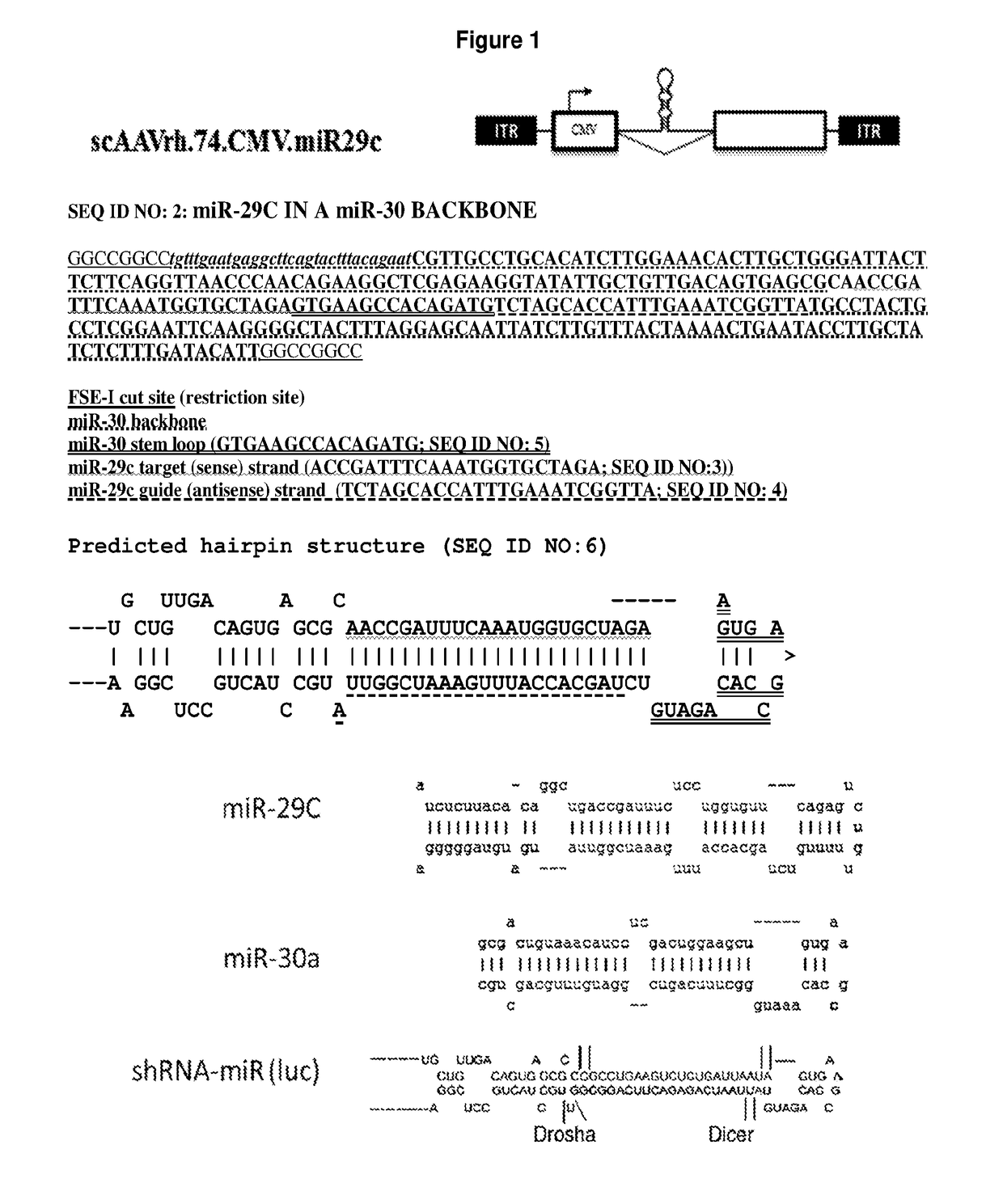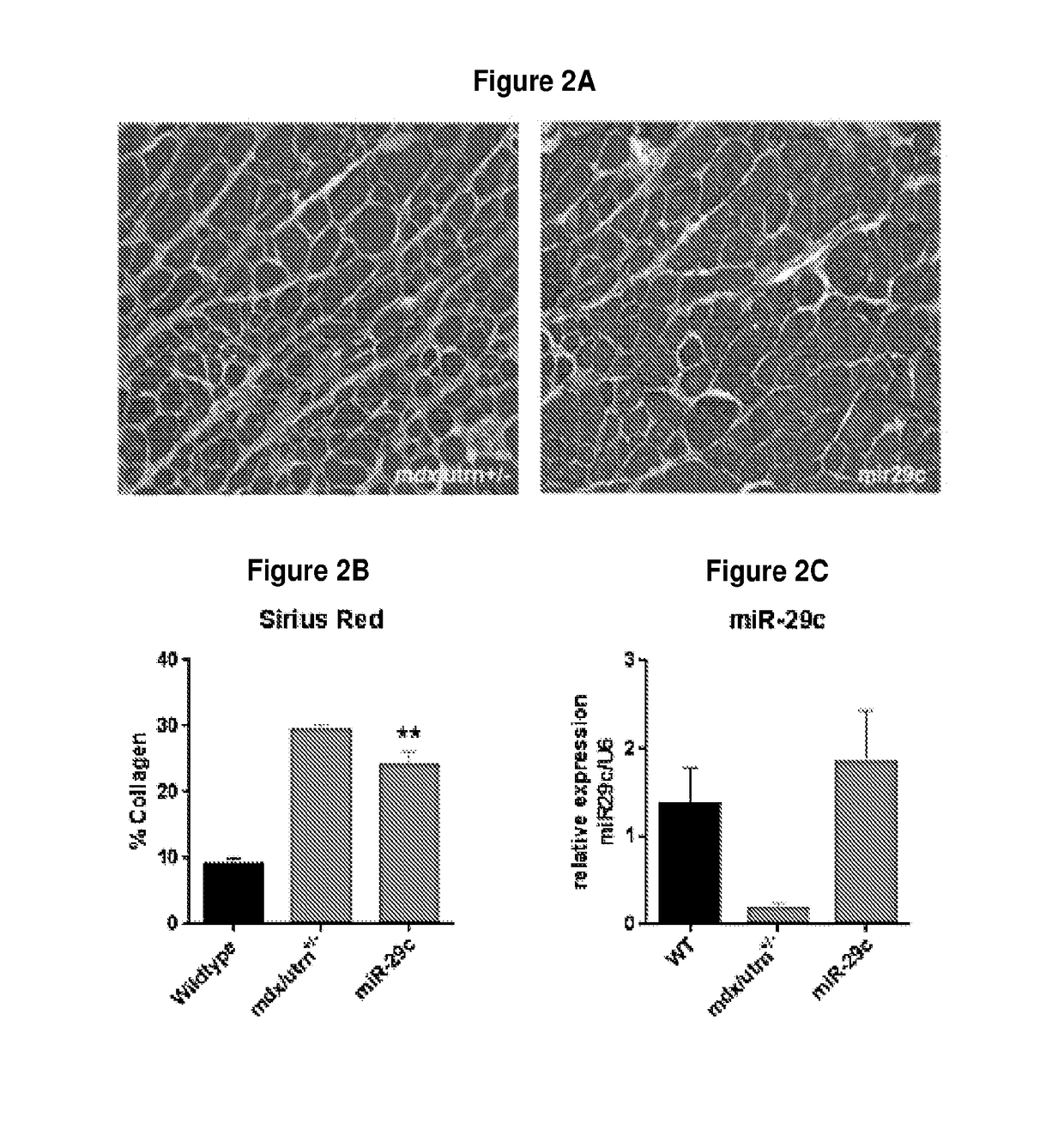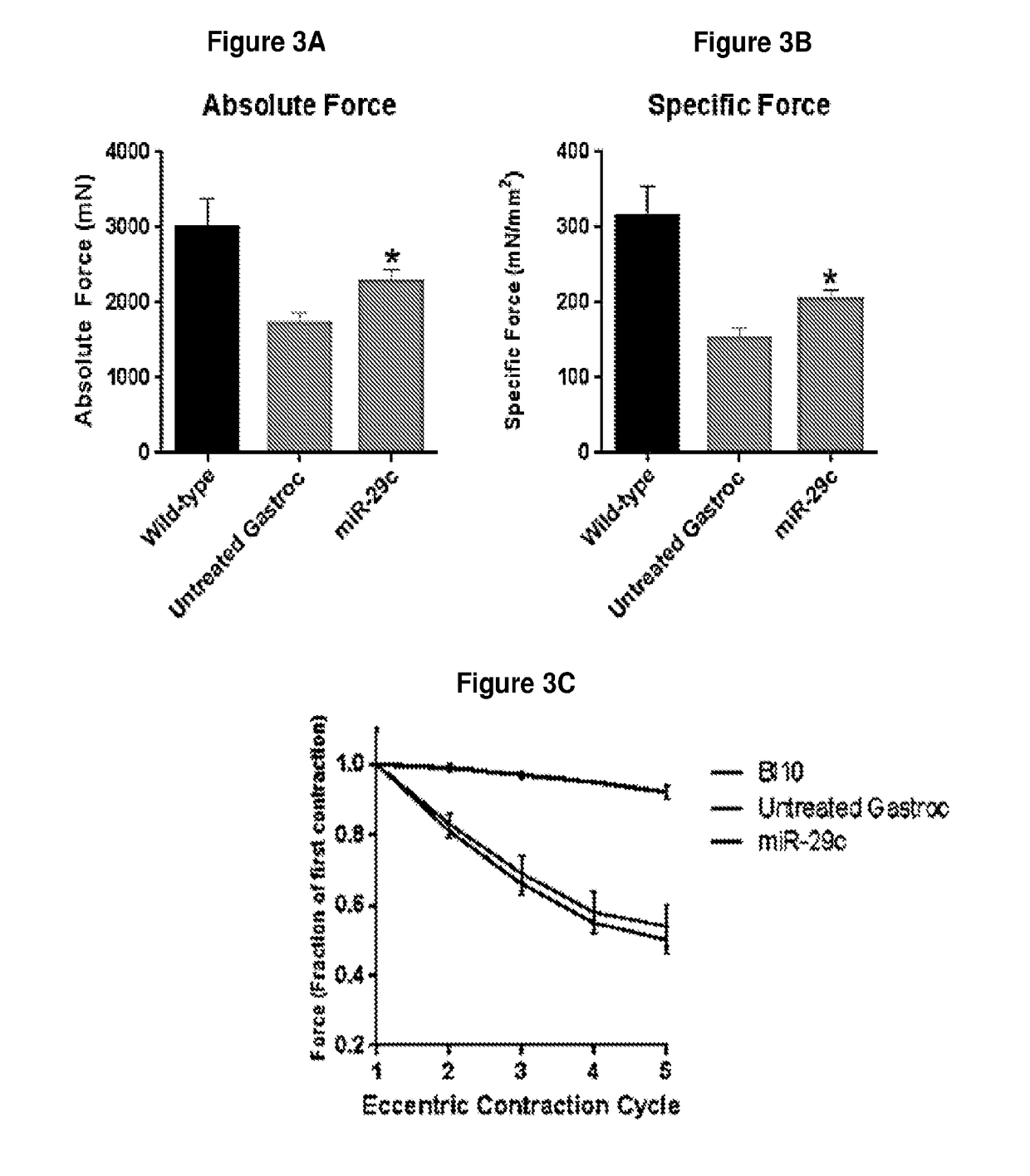Adeno-associated virus vector delivery of microrna-29 and micro-dystrophin to treat muscular dystrophy
a technology of adenoassociated virus and microrna-29, which is applied in the direction of peptides, drug compositions, peptides, etc., can solve the problems of muscle function deficits that produce muscular dystrophies (mds), serious impacts on quality of life, and membrane fragility, so as to reduce and/or prevent fibrosis
- Summary
- Abstract
- Description
- Claims
- Application Information
AI Technical Summary
Benefits of technology
Problems solved by technology
Method used
Image
Examples
example 1
Confirmation of Duchenne Muscular Dystrophy Models
[0105]The mdx mouse provides a convenient, yet incomplete, animal model to study DMD pathogenesis. This model is a cross of the mdx mouse with a heterozygous knockout of the utrophin gene (mdx:utm+ / −), which presents with increased fibrosis and more faithfully recapitulates the pathology of human DMD. Mdx mice have a nonsense mutation in exon 23 of DMD that results in a relatively mild phenotype and a near-normal life span. By 3 weeks of age, the diaphragm and limb muscle of mdx mice develop signs of endomysial inflammation. These symptoms subside in the limb muscle after the mice reach adulthood while the inflammation in the diaphragm muscle continues to progressively worsen. In mdx mice lacking telomerase, muscular dystrophy progressively worsens with age; mdx mice lacking utrophin (DKO) have a phenotype more characteristic of human DMD with early onset muscle weakness, severe fibrosis, and premature death. Utrophin, an autosomal p...
example 2
Delivery of miR29 to DMD Mice Reduces Fibrosis
[0106]Preliminary studies have demonstrated that there is a significant increase in Sirius Red staining for collagen and a decrease in miR-29c levels in human DMD patients and the mdx / utrn+ / − mouse. Gene delivery of miR-29 using muscle specific AAV vectors is potentially safe and efficient. To generate the rAAV vector, referred to herein as rAAVrh.74.CMV.miR29c, the 22 nucleotide miR29c sequence (target strand SEQ ID NO: 3 and guide strand SEQ ID NO: 4) was cloned into a miR-30 scaffold driven by a CMV promoter. The expression cassette (SEQ ID NO: 2) was cloned into a self-complementary AAV plasmid and packaged using AAVrh.74, a serotype known to express well in muscle. The miR-29c cDNA was synthesized using a custom primer containing the miR-29c target (sense) strand, miR-30 stem loop and miR-29c guide (antisense) strand in the miR-30 backbone. Three bases of the miR-29c sequence were modified. This sequence was then cloned into a self-...
example 3
Injection of MiR-29c Reduces Collagen and Restores miR-29c
[0110]To determine whether rAAVrh.74.CMV.MiR-29c could reduce fibrosis, 12-week-old mdx / utrn+ / − mice received an intramuscular injection of rAAVrh.74.CMV.MiR-29c at 5×1011 vgs to the left gastrocnemius (GAS) muscle. The mice were analyzed at 12 weeks post injection. Picrosirius red staining revealed a significant decrease in collagen staining throughout the GAS muscles (FIG. 2a) compared to the untreated contralateral mdx / utrn+ / − GAS muscle. Quantification of the picrosirius red staining shows that treated muscle had a 18.3% reduction in collagen compared to the untreated muscle (treated—23.3%±1.3 vs. untreated—29.5%±0.7)(FIG. 2b). To confirm overexpression of miR-29c in treated muscle, total RNA was extracted from the GAS muscle from 24 week old WT, miR-29c treated and mdx / utrn+ / − mice and subjected to quantitative reverse-transcription PCR (qRT-PCR) analysis for miR-29c expression. The results showed that miR-29c was signif...
PUM
| Property | Measurement | Unit |
|---|---|---|
| diameter | aaaaa | aaaaa |
| diameter | aaaaa | aaaaa |
| absolute force | aaaaa | aaaaa |
Abstract
Description
Claims
Application Information
 Login to View More
Login to View More - R&D
- Intellectual Property
- Life Sciences
- Materials
- Tech Scout
- Unparalleled Data Quality
- Higher Quality Content
- 60% Fewer Hallucinations
Browse by: Latest US Patents, China's latest patents, Technical Efficacy Thesaurus, Application Domain, Technology Topic, Popular Technical Reports.
© 2025 PatSnap. All rights reserved.Legal|Privacy policy|Modern Slavery Act Transparency Statement|Sitemap|About US| Contact US: help@patsnap.com



